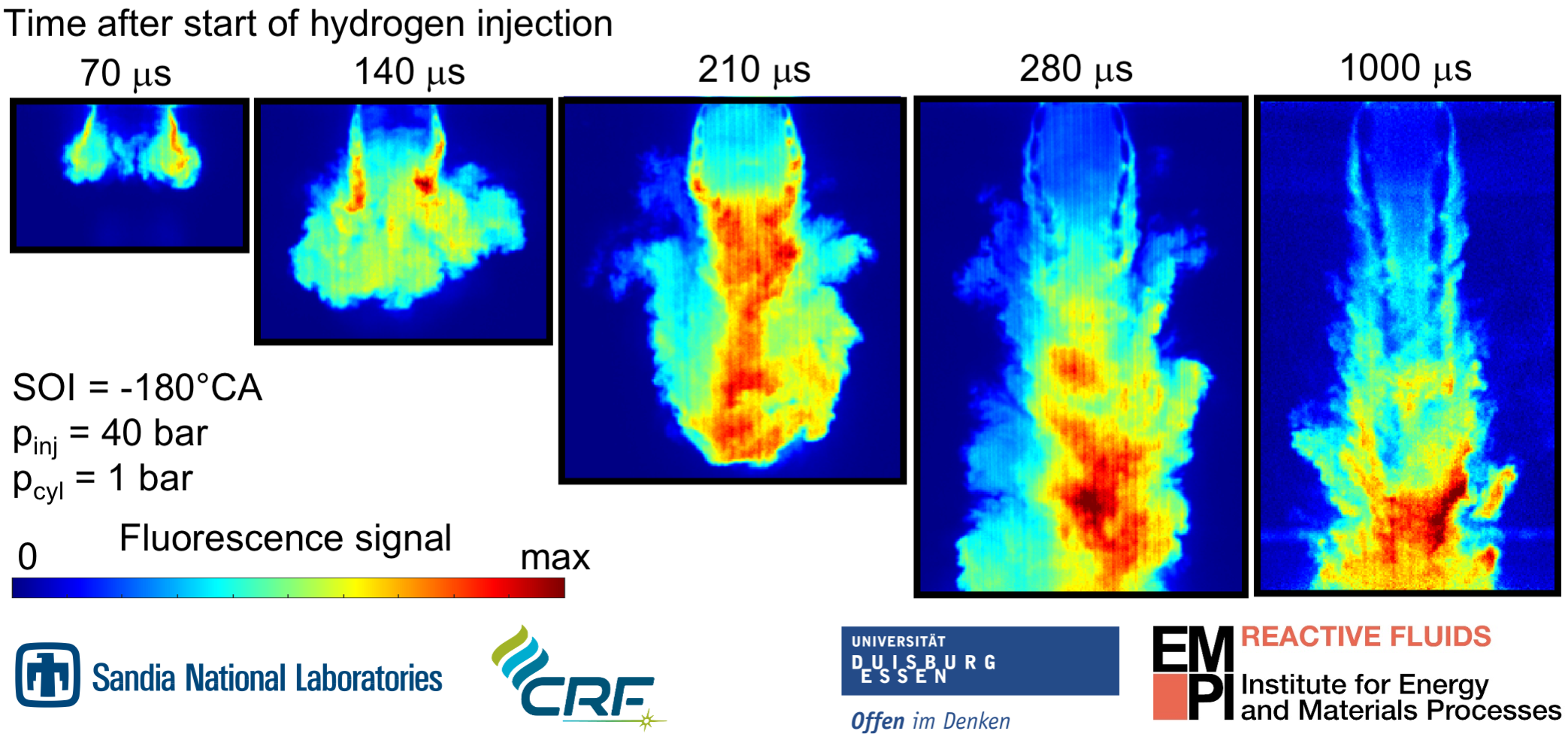Cyclic variation in hydrogen-fueled engines
In the Research Unit FOR 2687, we experimentally investigatecyclic variations in hydrogen-fueled spark-ignition engines. In particular, we examine that part of the cause-and-effect chain that leads from the direct injection of the fuel into the cylinder to the variations in the early flame propagation. Cyclic variations are chaotic variations in the thermodynamic metrics of each individual engine cycle, such as peak pressure, fuel burn rate, and indicated mean effective pressure. These variations are associated with phenomena like knock and misfire that fundamentally limit the engine efficiency. Compared to hydrocarbons, hydrogen as fuel has very different properties that strongly influence the fuel/air mixing and combustion. Very little is known about cyclic variability with this unconventional fuel, hindering hydrogen engine development. The goal of this sub-project is to gain a detailed understanding and from that a conceptual model of the part of the cause-and-effect chain leading from direct injection and mixing via ignition and inflammation to the resulting cyclic variations. Here, this is achieved by experiments in collaboration with simulations from cooperation partners. Therefore, a further goal is providing suitable experimental data for the validation of these simulation methods, and conversely analyses of the simulation results for a more complete assessment and understanding of the experiments. In terms of methods, we aim to develop the optical imaging techniques that are currently insufficient for high-quality measurements with hydrogen as a fuel. Also, methods for the analysis of spatio-temporally partially coherent complex flows are to be developed to be able to back-track from the effect to the causes of cyclic variability. The experiments are performed in optically accessible single-cylinder research engines, some in collaboration with Sandia National Laboratories’ Combustion Research Facility in Livermore, California. We use optical imaging at high frame rates (10 000 to 100 000 frames per second). The hydrogen injection is visualized by schlieren imaging, the in-cylinder flow by particle image velocimetry, the fuel/air-mixing by laser-induced fluorescence (at only one image per cycle), and combustion additionally via the chemiluminescence of the hydroxyl-radical. This sub-project collaborates particularly closely with those sub-projects that investigate the supersonic hydrogen-injection and that look at in-cylinder flow, mixing, and combustion with spatiotemporally highly resolved multi-dimensional simulations.


